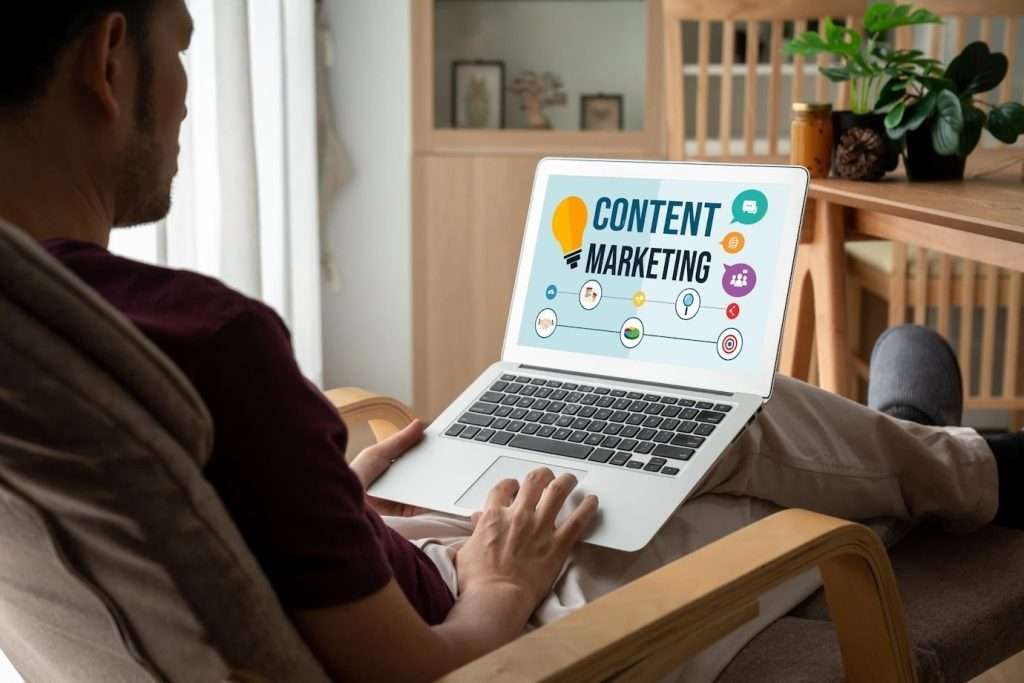For professionals looking to attract high-paying clients, LinkedIn is a goldmine. However, LinkedIn’s potential for content marketing remains underutilized by many. In this comprehensive guide, we’ll explore actionable strategies to help you master content marketing on linkedin to Attract high-paying clients you’ve been eyeing.

1. Creating Content That Resonates with High-Paying Clients
Attracting high-paying clients requires tailored, value-driven content that speaks to their needs and pain points. Start by understanding your target audience:
- Who are they?
- What challenges are they facing?
- What solutions do they need?
Once you have these answers, your content should focus on providing solutions. High-paying clients aren’t looking for fluff; they want actionable insights and expert advice. The key is to:
- Be concise and focused: High-level clients don’t have time for long-winded content. Get to the point quickly.
- Use data and case studies: Back up your claims with evidence. Show that you understand their industry.
- Share experiences: Share your own business experiences to build trust and authenticity.
Example: If you’re targeting CEOs in the tech industry, create posts about industry trends, case studies on tech innovations, or expert commentary on future developments. This positions you as an authority in their space.
2. How to Use LinkedIn Articles to Showcase Expertise
LinkedIn Articles are an excellent way to showcase your expertise in-depth. Unlike regular posts, articles give you the space to dive deeper into subjects, positioning you as a thought leader.
- Choose relevant, high-value topics: Articles should answer specific questions that your target clients have.
- Structure matters: Start with a hook, build up with valuable content, and end with a strong call-to-action (CTA).
- Optimize for SEO: Use relevant keywords like “LinkedIn content marketing, high-paying clients” throughout your article, but avoid keyword stuffing.
Additionally, cross-promote your articles on other platforms like Twitter, and email newsletters to drive more traffic to your LinkedIn profile.
Example: Write an article titled “How Content Marketing on LinkedIn Can Triple Your Revenue in 6 Months,” sharing data, real-life examples, and step-by-step processes.
3. LinkedIn Posts: Best Practices for Maximum Engagement
LinkedIn posts, when done right, can boost your visibility and engagement. Here are some best practices:
- Keep posts concise: Limit your posts to around 1300 characters.
- Use visuals: Posts with images, infographics, or videos perform better.
- Engage with a question: Always encourage dialogue by ending with a question. It invites engagement.
- Post regularly: Consistency is key. Posting 3-5 times a week keeps your audience engaged and positions you as active on the platform.
Example: Create posts sharing quick tips like, “5 Quick Ways to Optimize Your LinkedIn Profile to Attract High-Paying Clients.” This resonates with professionals looking for quick wins.
4. Leveraging LinkedIn Polls for Client Engagement
LinkedIn polls are a simple yet powerful tool for engaging with your audience and gathering insights.
- Ask questions that matter: Ensure your polls address topics that interest high-paying clients.
- Analyze the results: Use the poll results to create follow-up content. For example, if a poll reveals that 70% of your audience struggles with scaling their business, your next post or article could address that pain point.
Example Poll Question: “What’s the biggest challenge in scaling your business to 7 figures?” Use the answers to tailor your content around solutions to these challenges.
5. The Power of LinkedIn Video Content for Client Attraction
Video content is highly engaging, and LinkedIn is no exception. Use video to:
- Showcase your personality: Videos give a more personal touch. Clients are more likely to connect with a face than just text.
- Demonstrate expertise: You can create tutorial-style videos, industry analysis, or success stories.
- Keep it short: Attention spans are short, so aim for 1-3 minute videos that are easy to digest.
Example: Create a video titled “How to Use LinkedIn Content Marketing to Land High-Paying Clients in Just 6 Months.” Share real examples of clients you’ve helped using these strategies.
6. Using LinkedIn SlideShare to Educate and Attract Clients
SlideShare is a lesser-known but valuable tool for content marketing on LinkedIn. You can upload presentations, infographics, and more to share educational content with your audience.
- Make it visually appealing: Focus on design—use compelling visuals and minimal text.
- Educate first, sell later: Your SlideShare content should focus on educating your audience rather than pushing a sale.
Example: Create a SlideShare presentation called “10 Content Marketing Strategies to Attract High-Paying Clients on LinkedIn” with actionable steps they can take.

![]()
7. Crafting a LinkedIn Content Calendar for Consistent Engagement
Consistency is crucial for maintaining visibility. A LinkedIn content calendar helps you:
- Plan content around key topics: Map out content that addresses different stages of the buyer’s journey.
- Mix up formats: Include articles, posts, videos, polls, and SlideShare presentations.
- Stay organized: Use tools like Google Calendar or Trello to keep track of your posting schedule.
Example: Plan to post a video on Monday, an article on Wednesday, and a poll on Friday. This keeps your content fresh and varied throughout the week.
8. LinkedIn Hashtags: How to Use Them to Reach High-Paying Clients
Hashtags help boost visibility on LinkedIn by categorizing your content and making it discoverable to a larger audience.
- Research relevant hashtags: Use a combination of popular and niche hashtags. For example, #ContentMarketing, #HighPayingClients, and #LinkedInStrategy.
- Don’t overdo it: LinkedIn suggests using 3-5 hashtags per post for optimal engagement.
Example: When posting a tip about attracting high-paying clients, use hashtags like #HighPayingClients and #LinkedInMarketing.
9. Repurposing Blog Content for LinkedIn Audience
Repurposing blog content allows you to get more mileage out of your existing content. Here’s how:
- Break it down into smaller pieces: Turn a long-form blog post into bite-sized LinkedIn posts.
- Create SlideShares or videos: Repurpose the key points of your blog into a SlideShare or video.
- Promote the original blog: Always link back to the original post for readers who want more in-depth information.
Example: Repurpose a blog post on “10 LinkedIn Strategies” into a series of posts, each focusing on one strategy.
10. The Role of Thought Leadership Content on LinkedIn
Establishing yourself as a thought leader on LinkedIn means creating content that:
- Addresses industry trends and insights.
- Offers innovative solutions.
- Engages in conversations with other industry leaders.
By positioning yourself as a thought leader, high-paying clients will be more inclined to seek you out for your expertise.
Example: Write a post or article discussing emerging trends in content marketing and how businesses can leverage them to attract high-paying clients.
11. How to Measure the Success of Your LinkedIn Content
Creating content is only half the battle; measuring its impact is equally important. For high-paying clients, data-driven decisions matter. Here’s how to measure the success of your LinkedIn content:
- Engagement Metrics: Track likes, comments, and shares on your posts. High engagement means your content resonates with your audience.
- Profile Views and Connection Requests: If you’re consistently seeing an uptick in profile views and connection requests, it’s a sign that your content is driving curiosity and potential leads.
- Inquiries and Direct Messages (DMs): The ultimate sign of content success is when potential clients reach out via DMs after seeing your content.
- Content Reach and Impressions: Use LinkedIn’s analytics to monitor how far your content is spreading. Wide reach means you’re tapping into larger audiences, which can include high-paying clients.
Example: Post a series of LinkedIn articles and track their performance. Analyze which topics receive the most engagement and replicate that style or subject matter in future posts.
12. How to Write LinkedIn Articles That Convert Clients
While engagement is critical, the real goal is to convert readers into paying clients. Here’s how to write LinkedIn articles that persuade:
- Solve Specific Problems: Your article should provide tangible solutions to pressing problems faced by high-paying clients.
- Use Strong CTAs: End your articles with a clear call to action, whether it’s scheduling a consultation, downloading a free resource, or signing up for your newsletter.
- Build Trust Through Transparency: Share case studies, testimonials, or stories of past clients who have benefited from your expertise.
- Be Relatable: Show empathy. Address your readers’ concerns as if you’ve faced them yourself.
Example: Write an article titled “5 Proven Strategies to Attract High-Paying Clients Using LinkedIn.” Within the article, share success stories of clients you’ve helped, and encourage readers to reach out for a consultation if they want to achieve similar results.
13. Using LinkedIn Stories to Engage with High-Paying Clients
LinkedIn Stories, a relatively new feature, offers a more casual and behind-the-scenes way to engage with your audience. Use stories to:
- Share real-time insights: Offer quick tips, snapshots of your workday, or a sneak peek into upcoming content.
- Engage with polls and questions: Ask your audience what topics they’re interested in, and use their responses to guide your future content.
- Create urgency: If you’re offering limited-time deals or webinars, stories are a great way to promote them in a more personal and urgent manner.
Example: Create a series of LinkedIn Stories showcasing your process for creating effective LinkedIn content. End with a poll asking viewers which topic they want to learn more about.
14. The Importance of Visual Content on LinkedIn
Visual content is increasingly becoming a crucial part of LinkedIn marketing. Text posts alone may not be enough to capture attention. Here’s why visual content matters:
- Increased Engagement: Posts with images, infographics, and videos get more engagement compared to text-only posts.
- Simplified Complex Ideas: Infographics or slides can simplify complicated topics, making them more digestible for high-level clients.
- Memorability: Visuals are processed faster by the brain, making your content more memorable.
Example: Create an infographic that breaks down “The Top 5 Benefits of LinkedIn Content Marketing for High-Paying Clients.” Use appealing colors and easy-to-read fonts.
15. How to Create Shareable LinkedIn Content
Creating shareable content helps expand your reach beyond your immediate network. High-paying clients are more likely to discover you when your content is shared by others in their circle. Here’s how to make your content shareable:
- Offer Value: People share content that they find useful. Ensure your posts provide actionable insights or unique perspectives.
- Make it Relatable: Content that resonates emotionally or professionally with your audience is more likely to be shared.
- Keep it Concise: Short, impactful posts tend to perform better. Avoid long-winded explanations.
Example: Post a short story about how LinkedIn helped one of your clients land a high-paying deal. The story should be inspiring and encourage others to share it within their network.
16. Leveraging User-Generated Content on LinkedIn
User-generated content (UGC) can add a level of credibility and trust that’s hard to achieve through self-promotion. Encouraging your clients or audience to share their experiences with your services can amplify your credibility.
- Ask for Testimonials: After a successful project, request your clients to leave a testimonial or recommendation on LinkedIn.
- Feature Clients: Showcase the success stories of your clients. Tagging them in posts can increase visibility and engagement.
- Run Campaigns: Create a hashtag and encourage your audience to share content using it. For instance, if you’re a content marketing expert, encourage followers to share their results using your tips.
Example: Encourage your high-paying clients to share their LinkedIn success stories and tag you in their posts. This creates social proof and builds trust within your network.
17. LinkedIn Newsletters: A Guide to Client Engagement
LinkedIn Newsletters allow you to send regular, long-form content directly to your followers. This feature is great for maintaining consistent engagement with high-paying clients.
- Focus on High-Value Topics: Your newsletter should be packed with valuable, actionable information that addresses the pain points of your target audience.
- Consistency is Key: Choose a frequency (weekly, bi-weekly, monthly) and stick to it. Regular updates keep your audience engaged.
- Encourage Feedback: Always end your newsletter with a prompt encouraging feedback or questions. This fosters a dialogue and keeps your content interactive.
Example: Launch a LinkedIn Newsletter titled “The Executive’s Guide to LinkedIn Content Marketing” and offer a deep dive into strategies specifically for CEOs and business leaders.
18. How to Use LinkedIn Events for Content Marketing
LinkedIn Events is a powerful tool for hosting webinars, workshops, or live Q&A sessions. These events allow you to showcase your expertise in real-time and directly engage with potential high-paying clients.
- Promote Events Ahead of Time: Use posts, stories, and personal invites to drive attendance.
- Offer Exclusive Value: Make sure your event addresses a topic that high-paying clients would find valuable, such as “How to Use LinkedIn to Close Six-Figure Deals.”
- Follow Up with Content: After the event, repurpose the material into posts, articles, or videos to keep the conversation going.
Example: Host a LinkedIn Event on “Maximizing LinkedIn for High-Paying Client Attraction” and promote it across your network. After the event, share key takeaways through posts and SlideShare.
19. Best Times to Post on LinkedIn for Maximum Impact
Timing matters when it comes to posting on LinkedIn. High-paying clients are busy, so posting when they’re most active increases the chances of your content being seen.
- Optimal Times: Studies show that the best times to post on LinkedIn are between 8 a.m. to 10 a.m. and 5 p.m. to 6 p.m. on weekdays.
- Best Days: Tuesdays, Wednesdays, and Thursdays tend to see the highest engagement rates.
- Experiment: While these general rules apply, it’s important to test different posting times and see what works best for your specific audience.
Example: Track your post performance by experimenting with different times over a month. Then analyze which timeframes result in the most engagement and stick to those.
20. Content Curation Strategies for LinkedIn
Content curation involves sharing high-quality, relevant content created by others. It’s a great way to supplement your original content and position yourself as an industry expert.
- Share Industry News: Stay updated with the latest trends and share articles, reports, and case studies that high-paying clients will find valuable.
- Add Your Insight: Don’t just share the content—add your perspective. Explain why the content is relevant and how it impacts your industry.
- Balance Original and Curated Content: A good ratio is 80% original content and 20% curated content.
Example: Share a recent report on LinkedIn’s impact on B2B marketing with a personal take on how it aligns with your strategies for attracting high-paying clients.
Conclusion
LinkedIn content marketing is one of the most effective ways to attract high-paying clients, but it requires strategy, consistency, and value-driven content. By leveraging different types of content—articles, posts, videos, polls, newsletters, and events—you can create a LinkedIn presence that not only engages your audience but also converts them into loyal, high-paying clients.
Remember, it’s not just about posting content; it’s about providing value, solving real problems, and positioning yourself as a trusted authority.















